But before I dive into tasting Takamaka, you should read about Allan Bjerreskov's visit to the distillery in the Seychelles at the end of 2021.
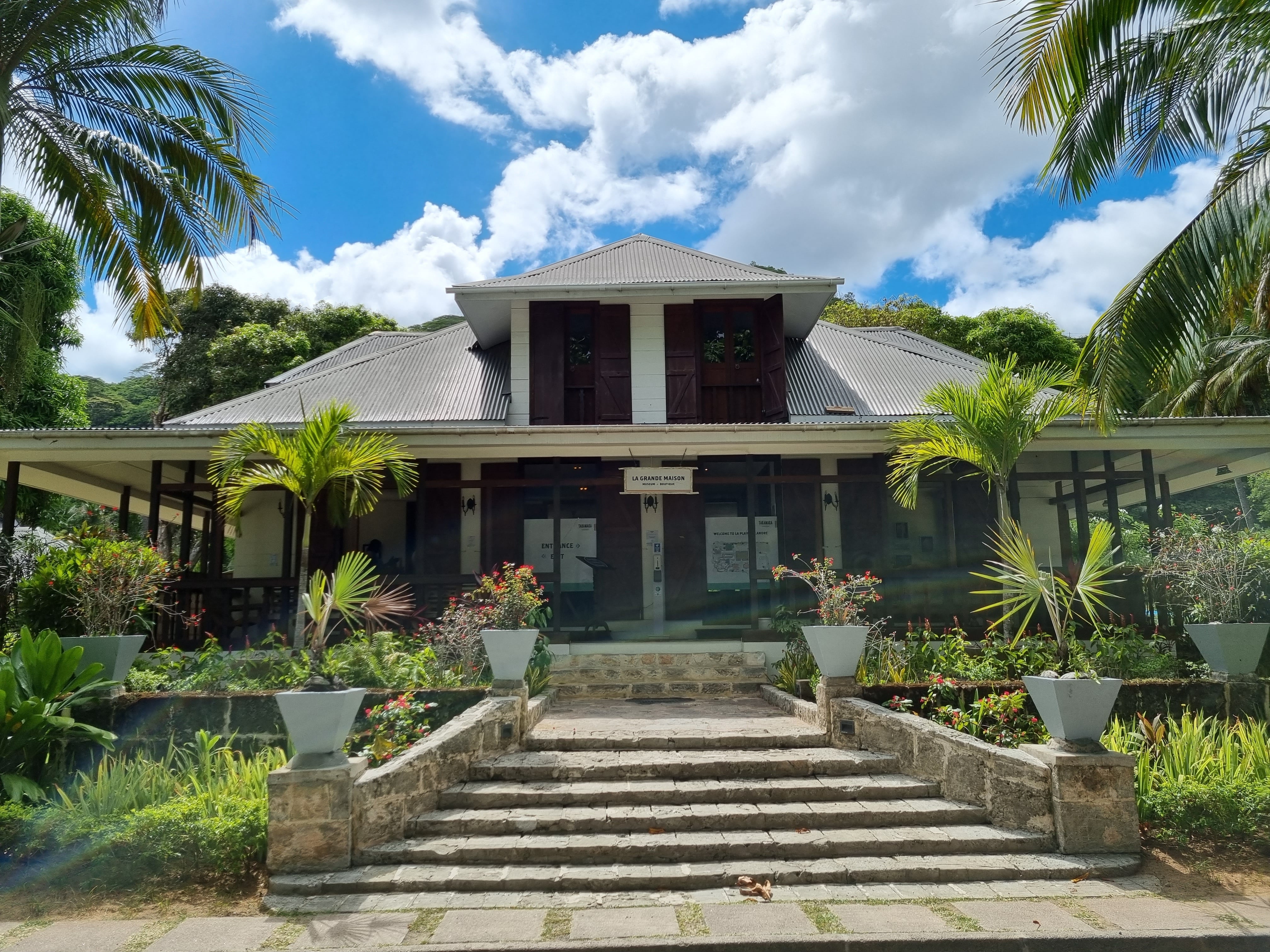
Rum in Paradise
Is rum made in paradise? One might argue that the term wouldn't even be appropriate if it wasn’t the case. I’m far from religious, but the East African country of the Seychelles is one of the most paradisiacal places I’ve ever experienced. On the eastern side of the main island, Mahé, lies the Trois Frères distillery, which produces the rum brand Takamaka. Just a stone’s throw from the Indian Ocean. And not the kind of stone’s throw that requires an estate agent's exaggeration or the skills of Mikkel Hansen or Joachim B. Olsen. A gentle underhand toss is enough to reach the turquoise waves on the other side of the road. So, if there’s a version of paradise for rum lovers, this could very well be it. I had the pleasure of visiting the distillery in 2021, where I joined their guided tour and tasted their standard series. My fellow blogger, Thomas, will guide you through this series further down in the post. As for me, I’ll simply offer a quick recommendation: their white overproof rum is an excellent buy for the price and can give your cocktails an African kick in the... you know.
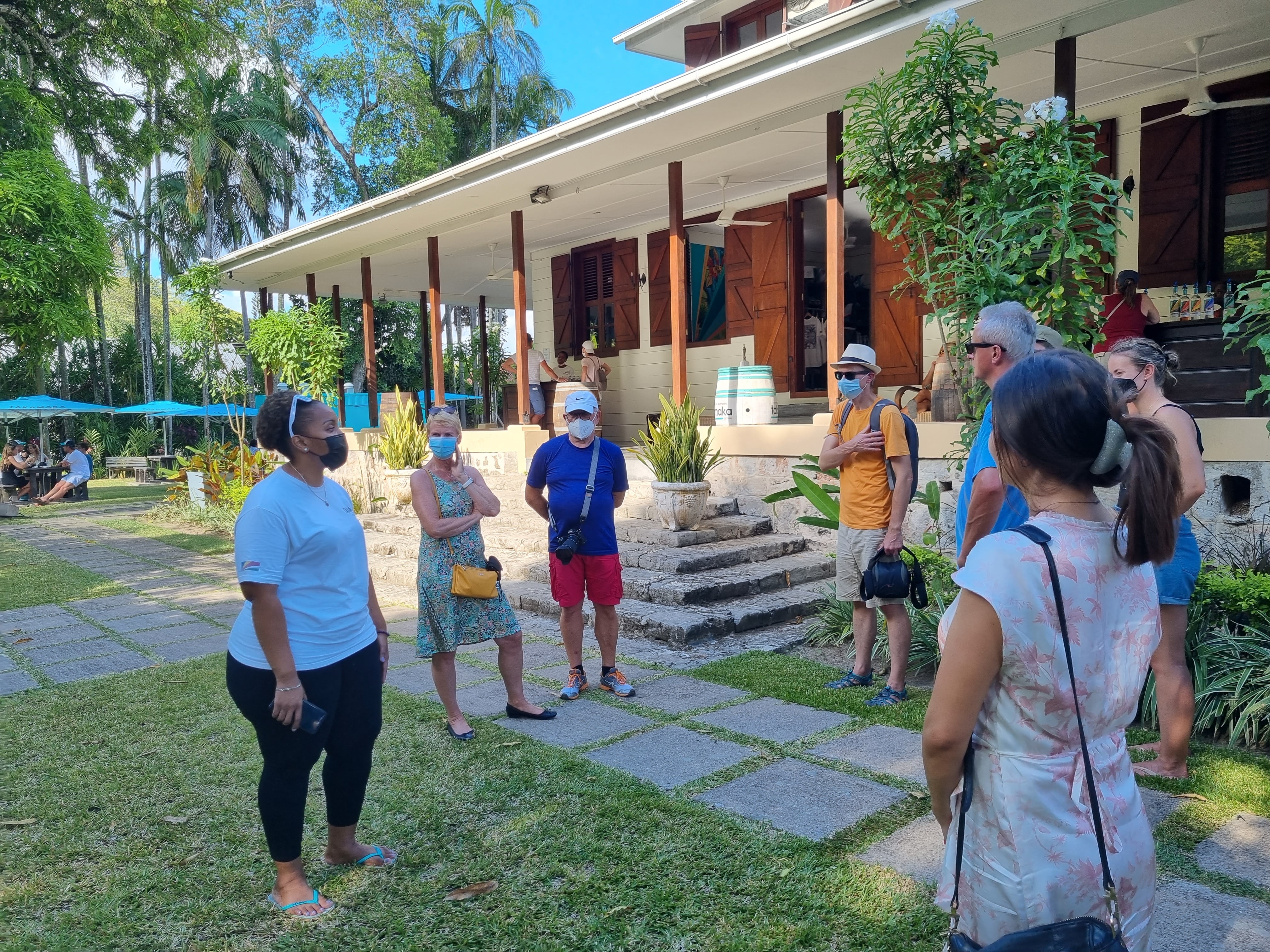
The distillery was founded by brothers Bernard and Richard d’Offay in 2002. Prior to that, they had spent a period experimenting with home distilling, using the swimming pool in their backyard to cool the vapors from their homemade condenser. According to the brothers, this resulted in a series of both successful and less successful experiments. I can assure you, however, that distillation at Trois Frères is now conducted under well-organized conditions with their three stills – one column still and two pot stills. The new stills were installed in 2021, replacing an older, gas-heated distillation setup.
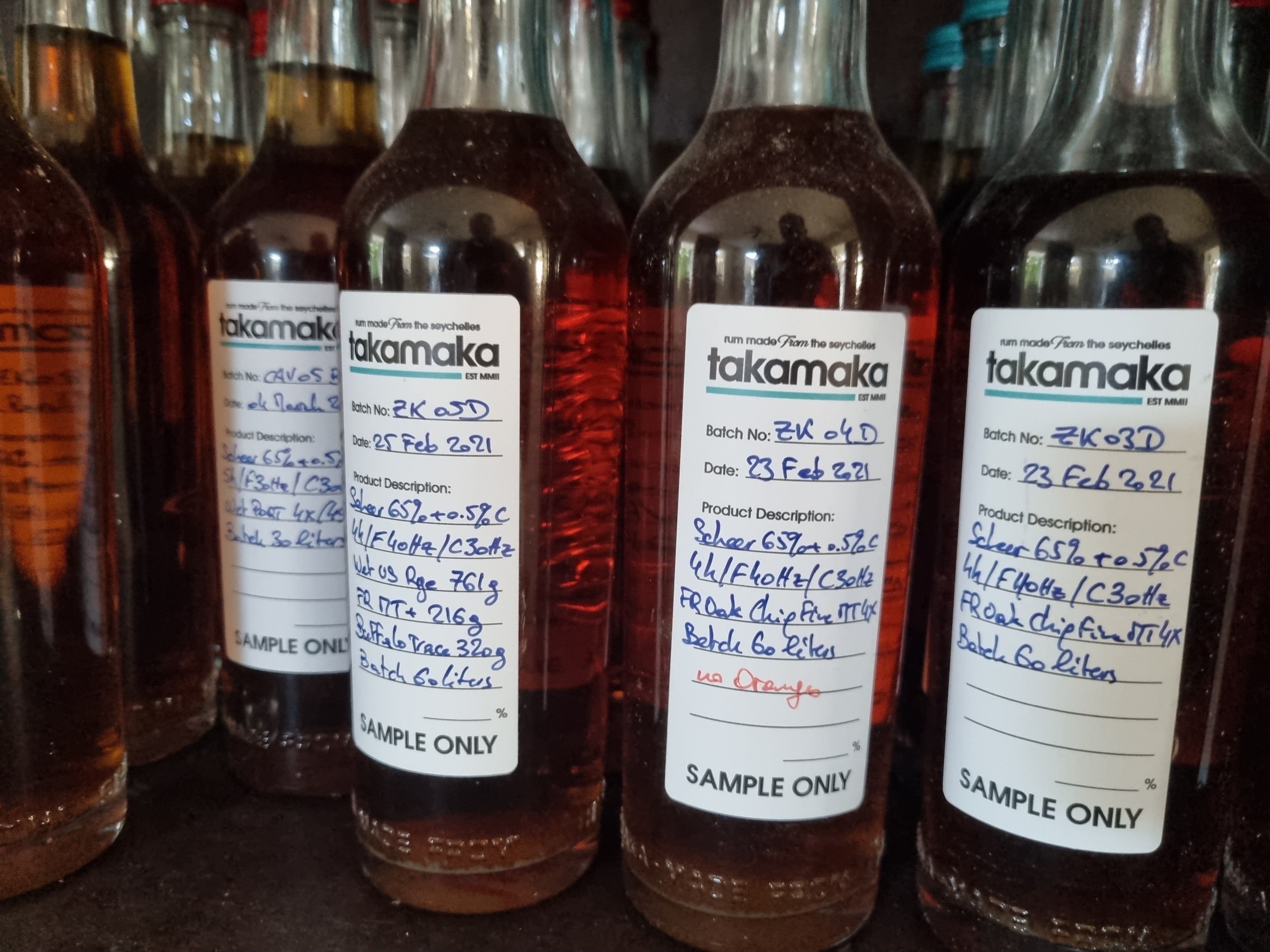
Some of Takamaka’s rum is made from locally produced sugarcane. In fact, there’s a very small field – more like an enclosure – right by the distillery, where they grow their own sugarcane. The harvest from this is used for special bottlings. Additionally, they collaborate with local farmers on Mahé and the island of La Digue (the smallest of the country’s three inhabited islands) to produce local sugarcane. However, they are challenged by the fact that the Seychelles primarily consists of granite, meaning there are limited opportunities to establish new plantations. With the rollout of the collaboration with local farmers, Takamaka has been able to increase their annual production from 4,500 to 7,000 liters of rum made from sugarcane juice.
The limited sugarcane production on the islands has mainly been used to make ‘Baka’ – a type of beer brewed from sugarcane. As a result, there has never been a sugar industry on the islands, and no molasses is produced in the Seychelles. For this reason, Takamaka imports molasses from other countries in the Indian Ocean. They also collaborate with Foursquare in Barbados, incorporating 8-year-old rum from there into some of their blends. The water used in their production comes from a national park on Mahé, so Takamaka does everything they can to ensure their products are unique while also contributing to creating jobs in the local community. So you can enjoy their rum with a clear conscience.
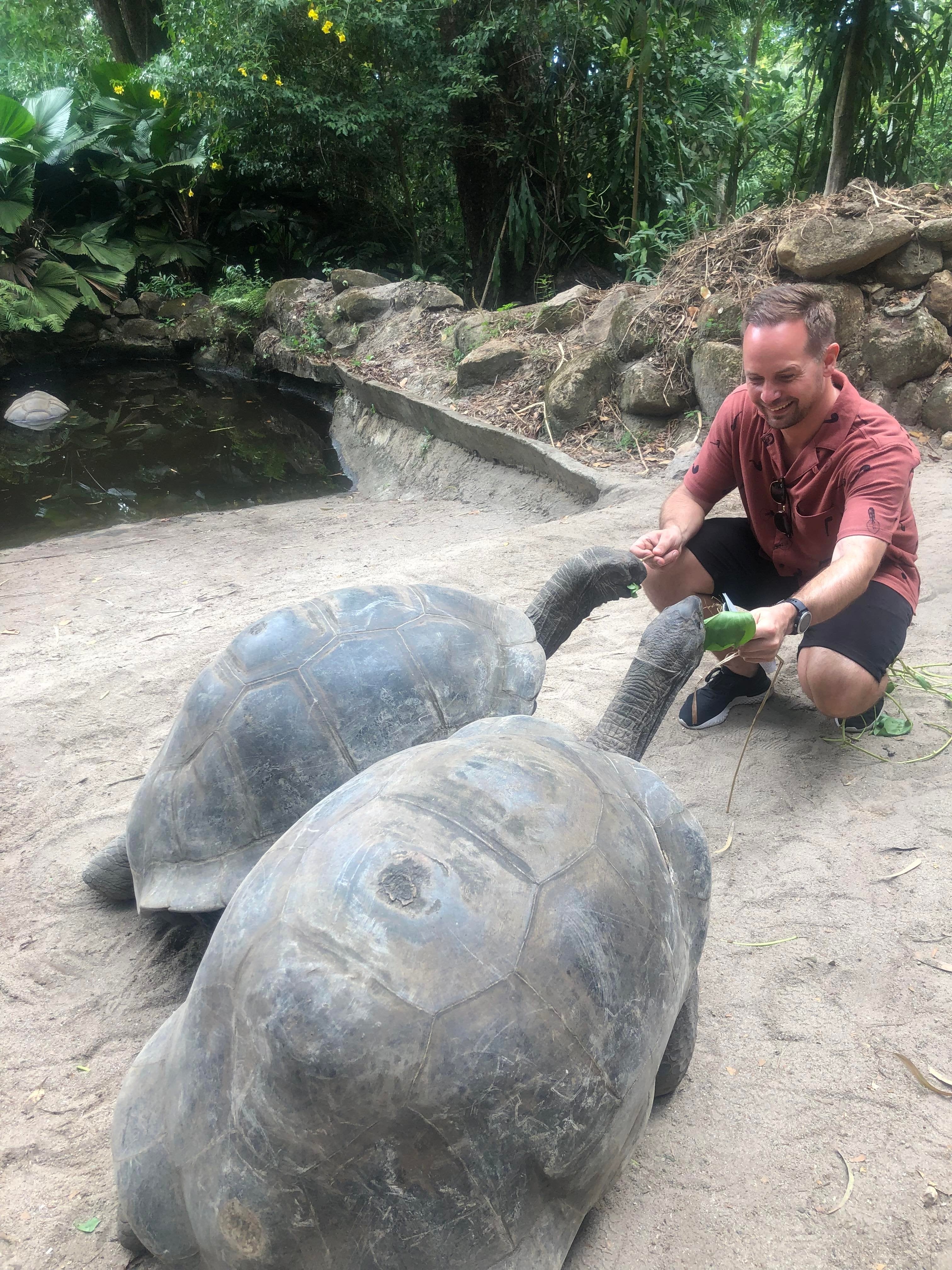
Turtles in the Backyard and Gold in the Cellar
When you step into the distillery, the first thing you notice is the charming main building, which dates back to 1792. Fortunately, it has been modernized since and now houses a bar, a small museum, and a shop where you can buy not only rum but also slippers, caps, and other tropical-friendly gear with the Takamaka logo – if that’s your thing. Most importantly, the cellar, where the various single casks are left to mature, is located right beneath the house. We’ll get back to that.
The distillery grounds also feature a small food truck and a garden with medicinal herbs, which tourists are allowed to visit as part of the guided tour. One of the main attractions, aside from the rum, is the two old Aldabra tortoises, Taka and Maka. They belong to one of the world’s largest and longest-living tortoise species, capable of living well over 100 years. In other words, there’s a good chance they’ll still be slowly roaming around the backyard if you visit someday. But you’re probably not here to learn about medicinal herbs and tortoises. So, back to the rum.
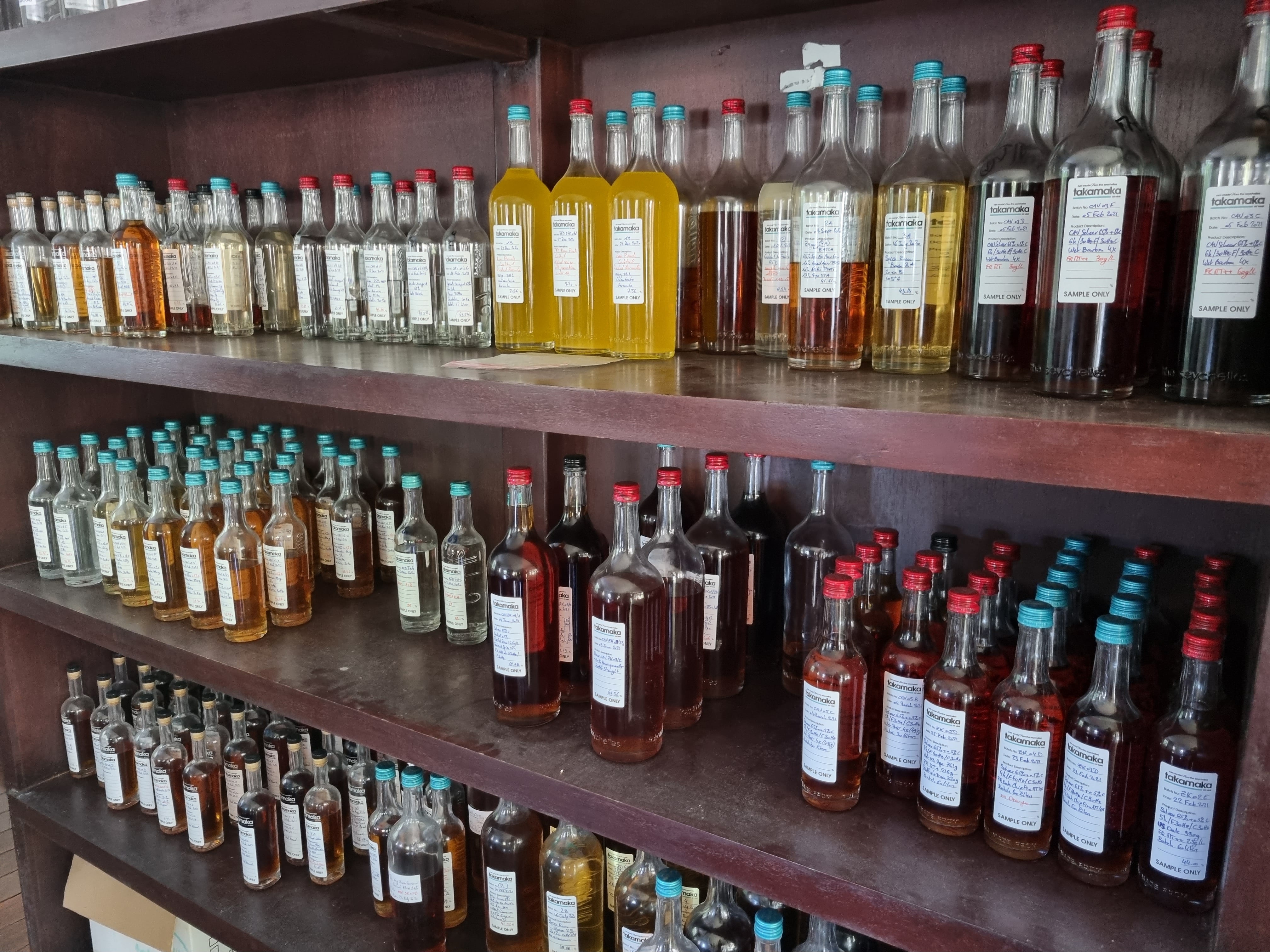
While pleasure-seekers can grab a cocktail at the bar to the right of the main house and enjoy it with a view of the blue sky accompanied by the sound of waves lapping against the ocean, I recommend rum enthusiasts head to the left. That’s where you’ll find the building housing the three distillation stills. Here, your nostrils are treated to the scent of freshly pressed sugarcane. Next to it is a small, open building where shelves are lined with samples from the various single casks maturing in the cellar. This is where master blender Steven Rioux, in the company of his collaborators, tastes the exclusive drops and decides when they should be bottled – and which components, if any, should be blended together.
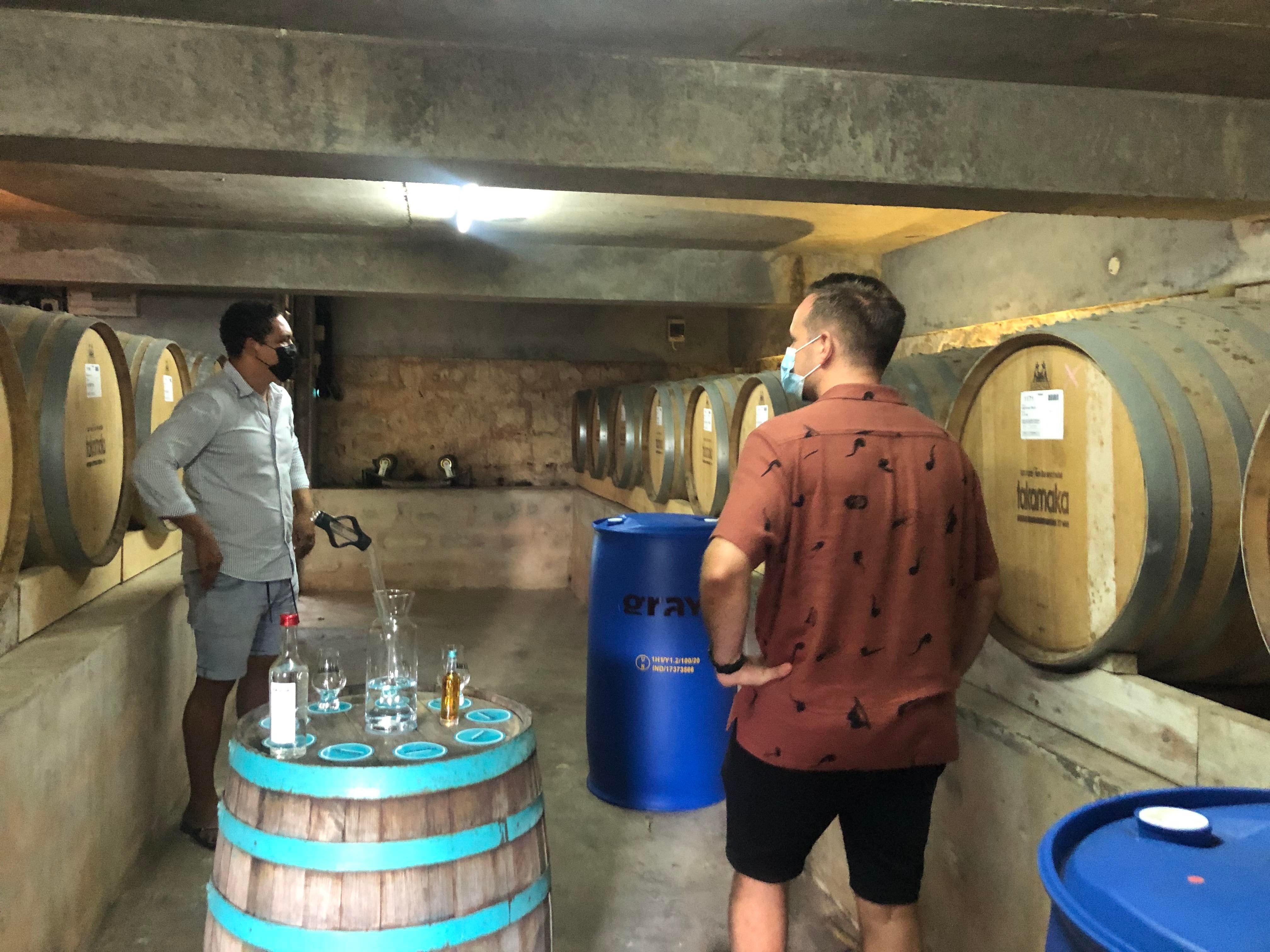
It was none other than Steven Rioux whom I managed to get in touch with before visiting the distillery. I was fortunate enough to receive a private tour of the cellar, which is normally off-limits to tourists. It’s a fairly small cellar, and Steven guided me around with great hospitality and enthusiasm. He drew samples directly from various barrels. Among other things, I tasted what eventually ended up on the shelves as part of the Habitation Velier series, but one particular rum from a Czech oak barrel was absolutely phenomenal. I was quite disappointed that my then-pregnant fiancée didn’t feel up to driving the rental car we had hired to get around the island. Nonetheless, it was a great pleasure to visit both the distillery and Steven, who, by the way, won the title of Blender of the Year in 2024.
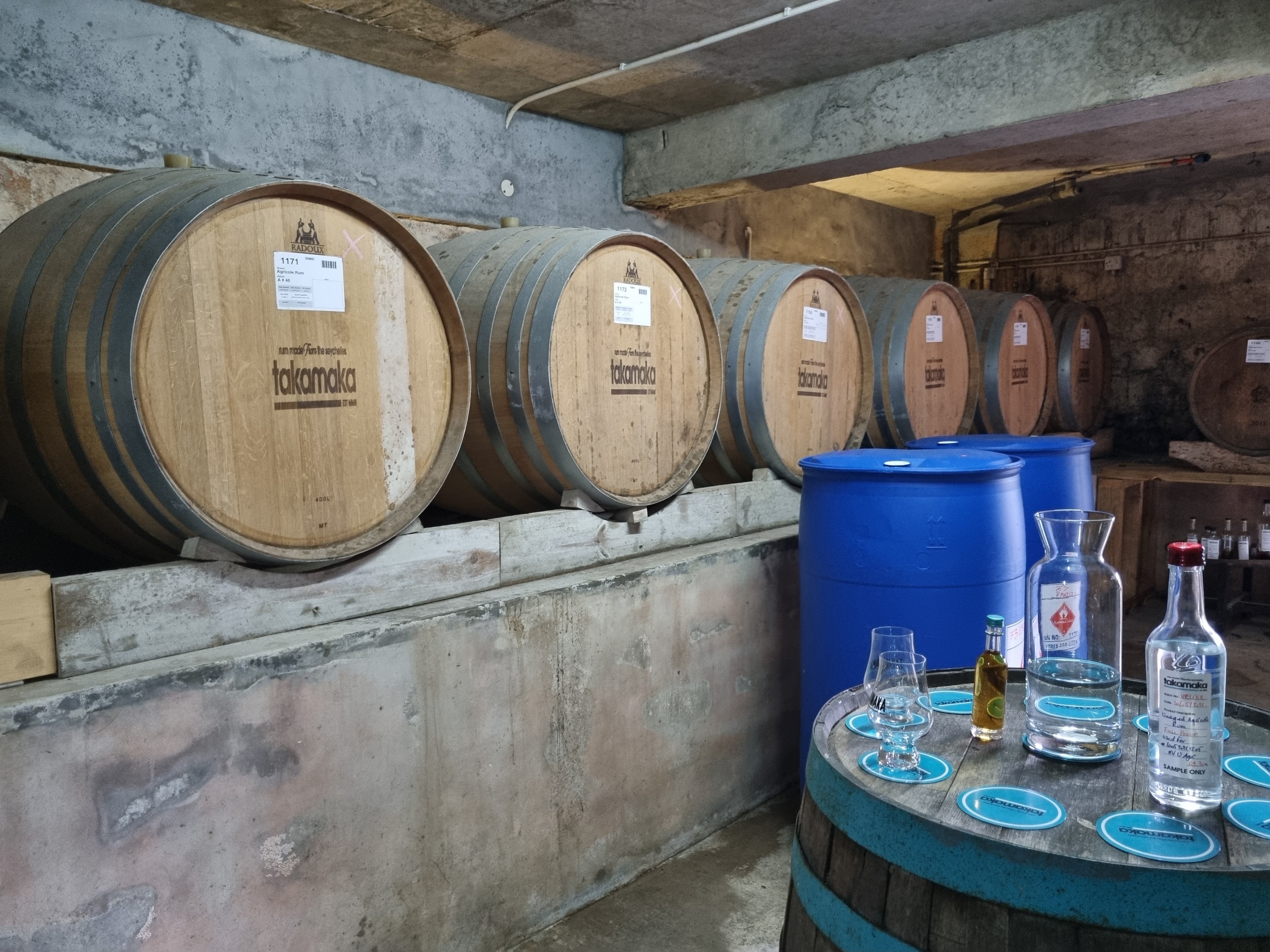
So, if you ever find yourself on the Seychelles, do yourself a favor and visit the Trois Frères Distillery. Enjoy some Takamaka rum in the stunning surroundings that help give it its unique flavor. And say hello to Taka and Maka if they’re still there. Until then, you can bring a little African island vibe into your home now that Takamaka is becoming more widely available in Denmark. As for which bottles to buy, I’ll leave that to my fellow blogger Thomas to recommend.